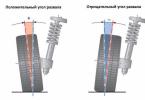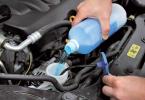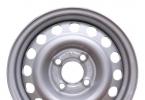Plastic repair is professional in Moscow, the repair time is from 15 minutes.

We repair plastics of almost any brands, plastic products of various shapes and configurations.
Breakage of plastic products is a fairly common problem these days. Many plastic products crack, break and become unusable during operation. In the restoration of broken parts, plastic welding will help, or as this process is also called - plastic soldering.


Soldering plastics is a process that requires careful preparation, specialist experience and a correct assessment of the maintainability of the product. If you do not follow all the features of the technology, then the seam will turn out to be brittle and will not withstand even minor loads.


How to repair a plastic part? There are several methods for welding. One of them is hot air rod welding. For each repaired product, a certain welding temperature is selected, otherwise the surfaces simply will not adhere to each other. Correctly selected temperature is not the main thing in the repair, you need to carefully prepare the surfaces, cut the edges in a special way and clean the surface.


There are several ways to repair a crack in plastic. To determine the technology for welding plastic, you need to know the nature of the damage and the material of the plastic. Soldering a crack in plastic can take from 1 to several hours. The process of welding a plastic product must take place in exact accordance with temperature and other factors, it is quite problematic to repair the plastic yourself, there is a possibility of overheating the plastic part and making it non-repairable.



Another repair method is the extrusion method. This is the most effective technique that allows products to continue to operate tightly and under stress. Not all products can be repaired by extrusion welding, sometimes the thickness of the material or its properties make it possible to repair only using the bar method. To start work, you need to determine the material from which the part is made, then select the method of production of work and start restoring the broken product. Each polymer (and there are many varieties of them) has its own melting point, therefore, for repairs, you need to select the temperature regime individually for each product.
If the question arose how to repair a crack in plastic? - contact us, we will be happy to help carry out the repair.
The restoration of plastic parts is carried out only by professional specialists, which guarantees full compliance with the technology. In our work, we use certified material for the restoration of plastic products and parts.
Repair of plastic car parts can be local or complex. In the case of local repair of a plastic part, its repair is done without removing the part from the car. In case of complex body repair, the part is removed and, after repair, is assembled into place.
Stages of repair work:
- removal of cracks in the part (if necessary)
- straightening the deformed plastic part using high temperature (if necessary)
- putty and sanding of damaged areas of the part
- priming and painting of prepared parts of the part, drying
- varnishing
Sometimes, with severe damage to the plastic, the restoration of plastic parts is impossible. In this case, it is better to replace the plastic part of the car with a new one. The managers of the body repair center will help with the selection of plastic parts and, at the request of the car owner, will carry out the purchase.
The bumper is perhaps the most damaged body part of a car. Damage to this body part is extremely simple: dents, cracks, scuffs.
Our technical center has extensive experience in repairing plastic bumpers, fenders, hoods and other plastic elements and car parts.
We can restore the original shape of a bumper or other plastic part of a car by soldering, reinforcing and applying a special plastic material intended for repair. We will paint a plastic car part.
You will need
- - soldering iron or glue;
- - acetone;
- - sponge;
- - emery;
- - fiberglass;
- - solder wire;
- - clamp or masking tape;
- - fittings;
- - primer for plastic;
- - dye;
- - varnish.
Instructions
Find out the composition plastic- its marking should be indicated on the wrong side of the product (for example, PA - polyamide or PP -). It is important to study the properties of this material, since the type will depend on this - gluing or welding. Polymers-thermoplastics (plexiglass, polyethylene, polypropylene and others) are easily recyclable. But you will not be able to melt the so-called thermosets (they include phenol-formaldehyde, epoxy and other resins and fillers). You will need special glue.
Select an adhesive in the building material, epoxy for this type of plastic and consult with a competent seller. Follow the manufacturer's instructions exactly. Sand the surfaces to be glued, clean them from dirt and degrease with acetone. You can glue the gap directly along the seam, or pre-strengthen it with fiberglass.
Use a solder wire of the same chemical composition to solder the leaky plastic part. Sand the working parts with sandpaper a centimeter from the edge, since the part to be welded will have to step over the left allowance for the strength of the seam. Collect the broken plastic and fix them with a clamp (fixing tool) or masking tape.
Start thin plastic from the "face" so that an ugly bump does not appear on the visible surface. You can repair plastic of a denser composition immediately from the wrong side. Run a soldering iron along the crack; apply solder and melt it into the thickness of the softened material. Thicker wire can be used from the turn of work.
Some masters combine spike plastic with reinforcement (reinforcement of the structure). For this, it is recommended to purchase a special brass or bronze mesh (about 0.2 mm in thickness). Cut the reinforcing material into strips of the desired size. Your task is to attach the amplifier to the inner surface of the chip and (heating the plastic with a soldering iron) drown it in the molten material.
Prepare for a facelift plastic... The glued or sealed surface must be washed, sanded with sandpaper No. 1000 and wiped with acetone.
Shake the primer bottle to plastic, shake it for 10 minutes and apply to the damaged part from a distance of 20 cm. If the package has other instructions, be sure to follow the manufacturer's advice. Cover the plastic with 2-3 layers (depending on the depth of damage), let it dry and again go over the product with emery and acetone.
The condition of the car interior worries motorists no less than the appearance of the body paintwork. And since plastic is one of the main materials on which the interior is based, its restoration is an important issue for vehicle owners. Doing such work with your own hands will not be difficult if you know the main methods that are used to repair the salon. You can simply replace the part, but some plastic elements are very expensive, so in many cases it is more profitable to return them to their previous appearance on their own.
Plastic recovery methods
Among car lovers, there are several popular ways to extend the life of plastic interior parts. Many people prefer to contact specialized services, where the restoration of the appearance of plastic is entrusted to professionals. However, if you wish, you can do a lot with your own hands. There are three main ways to restore an attractive look to plastic parts:
- application of special paint;
- constriction with leather or its substitute;
- pasting with a film;
- heated sanding.
Each of these methods should be considered in more detail.
Painting
One of the easiest ways to restore an attractive look to the plastic of the car interior is painting. To carry out such repairs with your own hands, you will need the following materials:
- special paint for plastic;
- primer;
- fine grain sandpaper;
- special putty for plastic;
- a set of tools for disassembling the cabin.

First you need to dismantle the part to be restored. In this case, it is preferable to use special tools so as not to add new scratches and abrasions to the plastic surface. The dismantled parts are thoroughly cleaned of dirt and dust, after which they are degreased with a plastic-safe agent.
If there are very deep scratches on the surface, then they can be carefully repaired with putty. After that, the parts of the car's interior are cleaned with fine-grain sandpaper.
This should be done with extreme caution, especially if the surface of the plastic has a corrugated structure. When painting parts with a complex and deep pattern, it is better to skip the grinding process and immediately proceed to the next stage of the repair.
Each detail is primed, painted and varnished. The primer is applied in two or three coats, and after applying it, you should carefully inspect the surface in good lighting. If there are defects, then they are either sanded or removed with a putty. The paint, like varnish, is applied in several layers. At the end of the work, the parts are dried, set in place and polished.

Padding
One of the most expensive ways to restore the plastic of a car interior is to tighten it with leather or its substitute. For work you need to prepare:
- covering material;
- special glue;
- stationery knife and scissors;
- a tool for dismantling plastic parts from the passenger compartment.
The salon, as in the previous version, must be disassembled. Individual elements are washed, dried and degreased. After that, you should cut the material for the covering, for which the leather or its substitute is applied to the part and marked with a marker along the contour. In this case, at the edges you need to leave a margin of a couple of centimeters.
Then the leather is cut and glued onto the plastic. It is convenient to level the material laid on the glue with a rubber roller, the edges of the leather are wrapped and glued on the back side, the excess is cut off. After laying, the parts are left to dry, then they are carefully mounted in the car interior.
In those places where adjacent elements are installed tightly to each other, the skin is not wrapped, but simply trimmed neatly along the contour and carefully glued.
Pasting
Another easy way to restore the plastic of the interior is pasting with vinyl film. To work, you need the following materials and tools:
- vinyl film of the desired color or carbon look;
- sharp stationery knife;
- building hair dryer with power adjustment;
- plastic or silicone spatulas;
- rubber roller.
The salon is disassembled and prepared in the same way as described above, after which the material is cut out. To apply the film to the part, the backing is removed from it, after which it is applied to the surface. Then, using a construction hair dryer, the material is warmed up and smoothed either with special spatulas or with a rubber roller. The further sequence of actions is similar to the repair during painting or constriction.

Heated sanding
The cheapest and fastest way to repair plastic parts of a car interior is by hot sanding. This method is only suitable for slightly damaged surfaces. Be especially careful if the plastic has a corrugated structure. For this work you will need:
- construction hair dryer;
- sandpaper;
- terry towel;
- means for cleaning and degreasing plastic.
To restore a part in this way, you do not need to remove or disassemble anything. This is especially true for those car owners who do not want to spend a lot of time on work. This method will also be appreciated by those whose parts are removed in the cabin with certain difficulties.
You need to start work by cleaning the surface - the plastic is thoroughly washed and degreased. Next, sandpaper comes into play - if there are deep scratches and abrasions, then it is better to use an abrasive with a coarse grain, and small defects are matted with P 1200 sandpaper.

After that, the plastic is warmed up with a hair dryer, while at the same time a small area should be processed if the part is very large. When working with a heat source, the main thing is not to overdo it and not to melt the material. If there is no experience in such work, then it would be better to use a regular household hair dryer to dry your hair - its temperature is not enough to harm the details, but it will be quite enough to achieve the desired effect.
After warming up the surface, it is polished with an ordinary terry towel, while it is important to observe the direction of the movements - they should be circular. If the work is carried out with a building hairdryer, then rubbing with a towel should be started slowly and carefully. If the plastic is overheated, then it is given time to cool down a little. After this treatment, any shallow scratches and scuffs will disappear and the plastic will look like new.
There are a lot of plastic parts in the car. The vulnerability of this material often leads to their breakage. The strength of the plastic does not correspond to the high price of such products; it is rather problematic to buy them, even on order. But it is possible to repair the part and completely restore it in our K2 technical center.
You should be aware that the repair of plastic parts in a warm season should be carried out immediately. Due to the fact that at high temperatures it will be much more difficult to give the initial shape to products.
Methods for repairing plastic products
In the manufacture of plastic parts, various types of plastics are used: polypropylene, polyurethane, thermosetting plastics, thermoplastics, polycarbonate, fiberglass, etc. Different plastic products can receive the following types of damage:
- cracks;
- dents;
- breaks;
- scratches.
The repair method is determined by the type of damage and the material of the products. Unmistakable determination of the type of material of the product is the key to high-quality plastic repair. There are such methods of repairing plastic products:
1. Heating. Designed for the repair of thermoplastics, namely, to eliminate dents on parts. Bumpers, headlights and various body parts are mainly made of thermoplastic.
2. Bonding. This method is used to repair thermo-plastic and thermoplastic parts. Thermosetting (thermosetting) ones are repaired exclusively by gluing and cannot be welded because they undergo irreparable changes during manufacture.
3. Welding. A more common method due to its time-tested reliability. Thermoplastic parts can be glued, but welding will provide them with greater strength and stability.
Some plastic elements can be repaired exclusively in one way, but there are those that lend themselves to several repair methods at once. For example, repairing a bumper can only be done by welding.
Plastic repair equipment
Compliance with precise technology and the use of specialized tools are important in achieving high-quality plastic repair and in the further restoration of the functionality of the part. Therefore, having determined the type of plastic and the method of repairing it, you should familiarize yourself with the nuances of the repair technology and follow all the rules when repairing it.
Not every type of plastic can be welded with a hair dryer, because different types of plastics require their own heating temperature for soldering. For welding, some require a high temperature of 500 o С, for such a soldering iron is suitable. With improper heating, when the permissible temperature is exceeded, the place of the eliminated defect becomes fragile, and the seams are very noticeable and may soon disperse. Therefore, for some plastics it is better to use a hair dryer, its temperature is lower (about 350 o С), but this is enough.
For the strength of the seams, only high-quality products should be used: various fillers and adhesives, welding electrodes and other equipment.


Buying a new bumper is not a tricky business, but repairing a damaged bumper will save money and even time. Repairing plastic does not take much time, even if you take into account all the jewelry of the work. Therefore, it is better to postpone the visit to the auto markets. It is possible to give a perfect look and restore all functions to the products thanks to high-quality and prompt repairs.
Step-by-step bumper repair technology:
1. Soldering is done on both sides of the defective area with a specialized soldering iron.
3. The attached mesh is soldered to the inside.
4. A special liquid plastic is applied to the place with a defect outside.
5. After the applied plastic has hardened, the craftsmen thoroughly sand the treatment site.
6. The last steps are priming and painting the bumper.
To reproduce texture and ornament on plastic products, a gel-plasticizer is used. After eliminating all defects, they proceed to painting the parts. High-quality work of specialists guarantees the absence of any traces of damage and roughness.
We can restore the original shape of a bumper or other plastic part of a car by soldering, reinforcing and applying a special plastic material intended for repair. However, you should always understand that not every plastic part can be repaired after destruction. In this case, our specialists can offer you a new spare part at a reasonable price.



